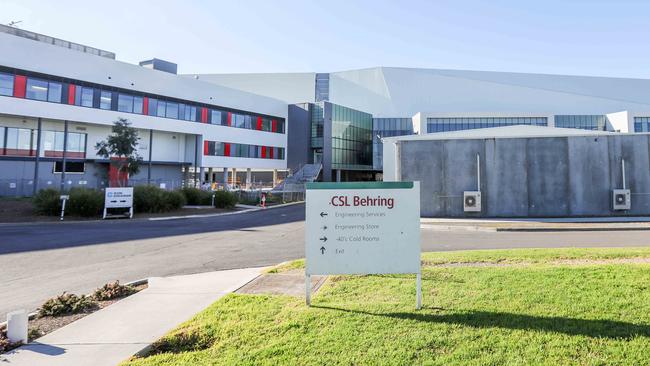Blood products giant CSL stock going nowhere and here’s why
The only world-ranking ASX company that is not a bank or a miner has been drifting for months. Whether that’s good or bad, depends on what likely follows next.

Despite all the ups and downs, the noise, the tribulations, the angst and intermittent periods of violent market volatility, the share price of Australia’s largest biotech, CSL, is effectively unchanged from three years ago.
Whether this is a positive, or not, depends entirely on one’s views on markets, investing and what likely follows next.
My personal view is that CSL’s sidetracking since 2020 is almost entirely explained by the macro forces that have since dominated global equities; from Covid-19, to the outbreak of inflation, the subsequent major reset in global bond yields and this year’s economic slowdown.
Throughout the fog of today’s slow-moving share price stasis, I see a long-term wealth generator whose valuation and operational momentum are once again aligned for a breakout to the upside, exact timing unknown.
Within this context I note CSL (CSL) shares have risen more than 24 per cent from January last year, and they are up around 8 per cent in 2023.
Taking into account company-specific dynamics, the share prices of a number of healthcare stocks on the ASX do not look fundamentally different from CSL’s trajectory, again emphasising the all-dominant macro influences for the sector throughout the past four years.
History suggests periods of relative stability in the CSL share price do occur, on occasion.
It happened between 2002-2006, with the global industry oversupplied, and again from 2008 till 2012.
Most importantly, both periods of stability saw the share price subsequently rally to fresh all-time record highs, and beyond.
Moreover, most healthcare sector analysts seem to agree with that positive view.
Having closely observed the Australian share market for more than two decades, I cannot recall ever seeing CSL popping up in as many Model Portfolios and Conviction Buy Lists as is the case this year.
There are many other stocks listed on the ASX where the share price today is similar to where it was in 2020 or 2021. The difference though depends on whether the shares initially sold off because of Covid-19, or whether they functioned as a safe haven throughout the initial phase of the pandemic.
All four of Australia’s major banks, for example, have not gained anything extra once the recovery rally into 2021 had been completed.
Luckily, for loyal shareholders, Australian banks are among the world’s best and most reliable when it comes to paying dividends, but the broader context for this sector doesn’t look half as promising as for CSL.
Australian banks, with notable exception of CommBank (CBA), are still continuing their lost decade post-GFC. Shareholders who own the shares since 2007 have only enjoyed the twice-yearly dividends, plus franking tax benefits.
In the case of ANZ Bank (ANZ), National Australia Bank (NAB) and Westpac (WBC) they also had to endure a fair degree of capital erosion.
Two of the banks, ANZ and Westpac, are arguably caught inside a long-term, downsloping channel since that memorable, final hurrah share price rally for the sector up until April 2015.
Despite bank shares lagging the broader market this year, there aren’t many analysts who are genuinely confident and positive about the sector’s immediate prospects.
Moreover, an oft-quoted market commentator such as Bell Potter’s Charlie Aitken, who’s uber-bullish on the ‘new bull market’ for local equities, still advises investors to dump their bank shares.
It is Aitken’s view local banks will simply add a second lost decade to their share price performances. Can the sector leading CBA withstand gravity a second time around?
Spotlight on cyclicals
More surprising, maybe, given economies have not faltered and inflation remains too high for comfort, is that something similar also applies to large cap resources companies, with a sideways trajectory of approximately two years.
As all kinds of commodities indices and benchmarks peaked around mid-2021 and since have trended south, it should be of little surprise the share prices of BHP Group (BHP), Rio Tinto (RIO), Fortescue Metals (FMG), Santos (STO), et cetera are all showing similar post-peak sideways trend.
New research by Longview Economics suggests this might signal a bad omen for the overall resources sector.
Longview’s analysis of historical data involves an equal-weighted index of share prices for US cyclicals, comprising of energy, financials, consumer discretionary, materials and industrials. Such an index has been flat over the year past, as well as flat since late 2021, the researcher reports.
History suggests such prolonged periods of sideways movement for this index are subsequently followed by weakness.
On Longview‘s data analysis, the current sideways-moving period is the sixth since 1996. All five previous occurrences eventually saw the index fall to much lower levels, implying share prices were simply biding time before the next big sell-off.
Equally important is that Longview notes not all pullbacks for US cyclicals are equal in duration and severity with the Fed response seen as the dominant factor. In mid-cycle downturns, the Fed’s policy adjustment is typically modest, and markets adjust swiftly and revert back into cyclical uptrend-mode.
In short, the report concludes that if US equities are poised for significantly higher levels, as suggested by some, this elevation will be achieved through technology and growth stocks instead.
Shorter-term, however, Longview’s own technical and momentum indicators are flashing warning signals, indicating the uptrend in technology and growth stocks, short-term, looks overstretched.
Rudi Filapek-Vandyck is editor of the share market research service FN Arena.





To join the conversation, please log in. Don't have an account? Register
Join the conversation, you are commenting as Logout